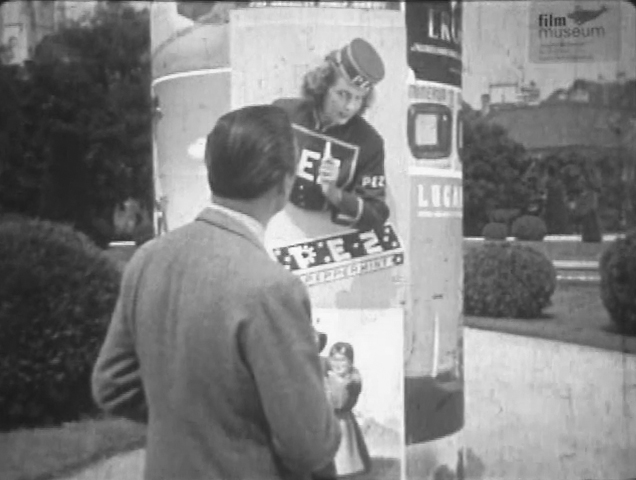Sponsored Films and the Culture of Modernization. Intersections between Economy and Aesthetics in Austrian Advertising and Industrial Films
Project Funding: OEAW Austrian Academy of Sciences (DOC-Team)
Project Duration: 01.08.2010–31.07.2013
Project Team: Sema Colpan (LBIGG); Lydia Nsiah (LBIGG); Joachim Schätz (tfm | Department for Theater, Film and Media Studies at the University of Vienna / LBIGG)
Project Partners: Ludwig Boltzmann Institut für Geschichte und Gesellschaft (LBIGG); tfm | Department for Theater, Film and Media Studies at the University of Vienna; Academy of Fine Arts Vienna; Institute for Contemporary History, University of Vienna
In their transdisciplinary research project, Sema Colpan, Lydia Nsiah and Joachim Schätz studied (primarily) Austrian advertising and industrial films produced between 1920 and 1960. They examined how the interplay of economic modernisation processes and aesthetic techniques gave rise to visual culture.
The debate on “Sponsored Films” is influenced by a reorientation of international film archives, responding to an expanded understanding of cultural heritage. It is also shaped by film studies with a cultural studies orientation, which seeks to enhance the scholarly study of historical practices and performance contexts beyond genre categories. In the case of advertising and industrial films, the central question became the connection between corporate development and communication systems or media: Media play a key role in coordinating and controlling rationalized production, distribution, and consumption processes. Advertising and industrial films are an essential part of modern corporate policy. Their use ranges from recording work processes for internal labour studies to communicating corporate identity externally. Thus, the role and function of aesthetic innovation as a component of modern corporate strategy, an area that has hardly been researched except in individual studies, has become the focus of cultural studies that transcends disciplines.
The growing interest in advertising and industrial films correlates with scholarly efforts to arrive at a ta comprehensive theory of societal developments and changes in the 20th century. Films from 1920 to 1960 were examined in relation to the mass production and mass consumption that unfolded during the same time. This period also corresponds to the international boom of an experimental and universally oriented advertising and industrial film industry as well as its decline with the replacement of cinema by television advertising. While there are already a number of overviews, collections of texts and monographic studies on historical advertising and industrial film production in Germany, the corresponding holdings in Austria were largely unexplored.
Against this background, the project provided fundamental source research. The advertising and industrial films investigated were examined with regard to the lines of connection inscribed in them between economic rationalisation, film aesthetics and practices of knowledge production (advertising psychology, market research).
Sema Colpan: Corporate Modernity? Austrian Advertising and Industrial Films with a special focus on the 1930s to 1960s
Sema Colpan’s economic and cultural historical study focused on the significance and function of advertising and industrial films in the implementation of the Taylorist production paradigm and the development of the Fordist accumulation regime. Alongside insights from industrial history, research on changes in management practices – keyword Americanism – and consumption history, regulation theory is fundamental for characterising the fluctuating relationship between macroeconomic designs and the small-scale mesh of the advertising and industrial film industries. Not least because its models allow us to think about the structural realignment of the accumulation regime at societal level and thus include social and cultural regulatory factors.
The required reconstruction of production and distribution practices of selected films allowed for a first-time insight into the nexus of optimization efforts in production, their scientification (“scientific management” and “social engineering”), and their communication strategies. Examining individual films for their visual connections to concepts of industrial modernity enabled capturing the convergence of culture and economy during the study period under expanded perspectives.
Lydia Nsiah: In the Rhythm of the Avant-Garde. Technologisation of Perception and Knowledge Transmission in “Sponsored Films”
In Lydia Nsiah’s media and art studies research, the Austrian advertising and industrial films compiled in the joint project “Sponsored Films” form the basis for an international comparative analysis of the film-aesthetic and knowledge-creating relations between industry and the avant-garde. On the one hand, manifestations of an avant-garde film aesthetic in advertising and industrial films were elaborated and, on the other hand, the focus was directed in particular to the translation of avant-garde theoretical concepts of the transformation of life worlds into the ephemeral film image of the “sponsored film”. The investigation followed the hypothesis that the radical aesthetic experiments of avant-garde art could be made productive for the purpose-oriented commercial and industrial film. Avant-garde aesthetic procedures gave visibility to abstract processes in the field of production and distribution and promoted the affective perception of these changes.
The concept of rhythm served as an analytical tool. Rhythm is a formative process of the film avant-garde as well as an instrument for practising standardised work processes and a suggestive advertising element. Methodologically, Lydia Nsiah thus began her comparative study of avant-garde and conventional advertising and industrial films with the use of rhythm-giving film techniques (animation, distortion, fragmentation). Considering their aesthetic execution in avant-garde commissioned films, they were means of expression for the establishment of a new “visual language” – with the aim of accustoming human perception to processes of rationalisation and abstraction and practising corresponding patterns of behaviour. The interfaces between affective aesthetics and economic efficiency inherent in the “sponsored film” were analytically identified on the basis of a specially developed rhythm concept.
Joachim Schätz: Economy in Images. Rationalisation and Contingency in Advertising and Industrial Films
In his film studies dissertation, Joachim Schätz examined selected films through the central pair of concepts crucial to industrial modernity: “rationalization” and “contingency”. Using these key terms, he identified and emphasized intersections and points of contact between the poetics of films, contemporary practices and discourses of efficiency enhancement, and theoretical concepts of film as a mediator of (reflective) modernity.
